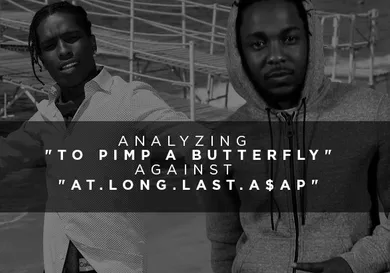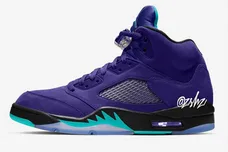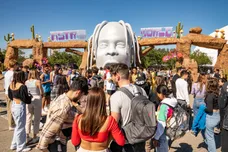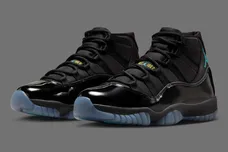The year 2015 is proving to be a landmark year for hip-hop, with seemingly every week having at least one noteworthy release. Perhaps most appealing to onlookers of the genre is the budding growth of some of the best emcees this generation has to offer. While rappers like Boosie Badazz and Tech N9ne’s offerings have done a fine job at digging their proverbial flags deeper into soil, the show has been stolen by some of the younger rappers whose growth is playing out right before our eyes (and ears) -- particularly Kendrick Lamar with his March effort To Pimp a Butterfly and A$AP Rocky’s more recent At.Long.Last.A$AP. Both have been praised by critics and fans, for different reasons as to be expected. A comparison between both MC's projects might not be obvious, but such a debate has been transpiring across the web.
With that in mind, we've decided to dig a little deeper and see what’s at play, venn diagramming what are arguably the two crown jewels of 2015’s hip-hop releases thus far.
What’s different:
To Pimp a Butterfly is a socially-conscious record, which devotes much of itself to addressing the socio-political climate. Not only that, it has the clear voice of Kendrick Lamar taking on the role of figurehead to speak on behalf of the masses in regards to events like and/or akin to Ferguson. That’s not to say that A$AP Rocky doesn’t acknowledge these harsh realities on A.L.L.A., because they’re there in form of select lyrics, on songs like “Max B” and “Pharsyde,” but even then they are far more introspective than Lamar’s more general addresses like “Hood Politics.” K-Dot devotes more space to these themes - hell, even the bouncy single “King Kunta” calls the scapegoating of black leaders in politics and pop culture into question.
It also would be remiss of us to not note that while A$AP is surely immersed and understanding of the national tragedies fueled by racism and police corruption that Kendrick takes into a stranglehold, Rocky also had his own personal tragedy on the heels of At.Long.Last.A$AP’s release-- the loss of friend and A$AP Mob squad member A$AP Yams. That loss, the use of LSD, and of course the use of marijuana to curb the hurt and manifest inspiration in the time of tragedy, is far more of a persistent influence on Rocky’s record.
Perhaps this laser focus on TPAB is less honed on A$AP’s A.L.L.A. due in part to A.L.L.A.'s being more of a get-together than To Pimp a Butterfly. It's not to the records detriment, though. For Rocky’s sophomore effort, features are in full force in fun fashion. Rod Stewart’s sample gets him a featuring credit, but a who’s who of fellow emcees show the Harlem native love, too. Lil Wayne, Mos Def, Kanye, ScHoolboy Q, are just a few notable ones. It helps establish the chill vibe that makes up a hefty hunk of A.L.L.A. On TPAB, Kendrick mostly tackles things alone, though the not-so-subtle-- albeit deserved-- pat on the back Kendrick received from Dr. Dre on the album, coupled with the Tupac conversation deserve acknowledgement in regards to being a clever way to pad out TPAB - egotistical or not.
What’s similar:
With K-Dot representing Compton and A$AP being a Harlem native, the two MC’s don’t let their homes dictate their sounds on either of their 2015 releases. However, when they embrace it-- they go full force. “Institutionalized” is a track pulled straight out of time, it seems, complete with the folktale narrative of the gangsta stuck in his circumstances so prevalent in the '90s boom of Cali rap. It even gets certified by the king of songs like this, Uncle Snoop himself. Similarly to Snoop Doggs stamp of approval on a very Cali track, is Mos Def’s cameo on A.L.L.A. On the aptly titled “Back Home” Flacko tag teams with Yasiin Bey (among others, including the late Yams) to slay a beat with those paranoid keys that harkens back to earlier Nas or BlackStar efforts. Whether the respective featured roles that Snoop and Mos take on are proverbial torch passings or not, is up to Snoop and Mos, but it sure comes across as such and does an exemplary job of authenticating the thrones that both Kendrick and Rocky are seizing. “Institutionalized” and “Back Home” couldn’t be more different sounding songs, yet they both can pass as regional anthems or at the very least, suitable samplings of respective state sounds.
One of the reasons chatter persists about both of these albums, and assumably will carry out its buzz for the rest of the year (and, perhaps, years to come) is the fact that they do a lot to bring "the album" back. They are, in their entirety, full listening experiences from start to finish; an unfortunate rarity in this day and age. On both records, this aesthetic is achieved thanks in part to their use of transitions between tracks. At times these transitions come in the form of literal interludes like Lamar’s “For Free” or “For Sale” and A$AP’s “Dreams,” that act as appendages that aid in completing their bodies of work. There are other instances, perhaps more effective ones at that, wherein other transitional strategies come to light. On To Pimp a Butterfly Lamar allows bits and pieces of a dialogue trickle down throughout the album, concluding tracks with spoken word that, by the album’s end, reveals itself to be part of a dream conversation with Tupac Shakur. A.L.L.A. is a bit different, with drug-induced swells and soundscapes drifting us from track to track like a tab of acid. A.L.L.A. also ends with a direct address, however, not too unlike TPAB.
In conclusion:
Both Kendrick Lamar and A$AP Rocky’s 2015 releases are clearly delicately put together pieces of work intended to be digested in its full albumic form. While some songs are bound to stand out for their inclusive sounds, their existence in their entirety holds more merit for their being part of a more diverse and immersive presentation. Lamar’s and Rocky’s passions-- sometimes similar and sometimes separate-- are evident in each track, and for that they are the two most impressive standouts of the year thus far. The East Coast representative’s record reeks of the drug influence, and traces of a spiritual surrender, likely in the wake of the loss of a best friend and collaborator, are present in a major way on A.L.L.A. Kendrick’s anger and impatience to both stop ignoring serious issues at hand in society, as well as to seize the number one spot are the driving forces for To Pimp a Butterfly. Between the two of the albums, there should be plenty for all types of listeners. One thing’s for sure-- the album is back; and thanks in part to Kendrick Lamar and A$AP Rocky’s artistic achievement this year, rappers without a full bodied, robust release are running out of excuses.







